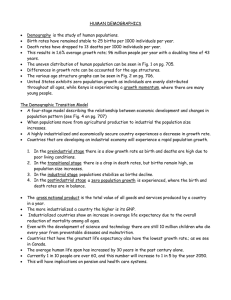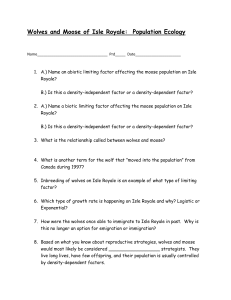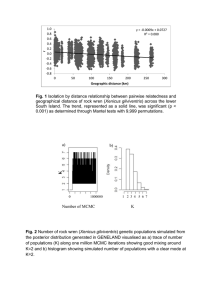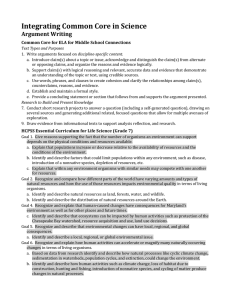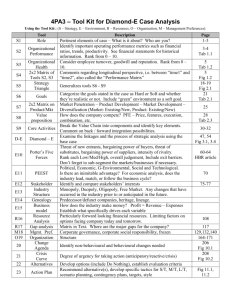AP Environmental Science notes
advertisement
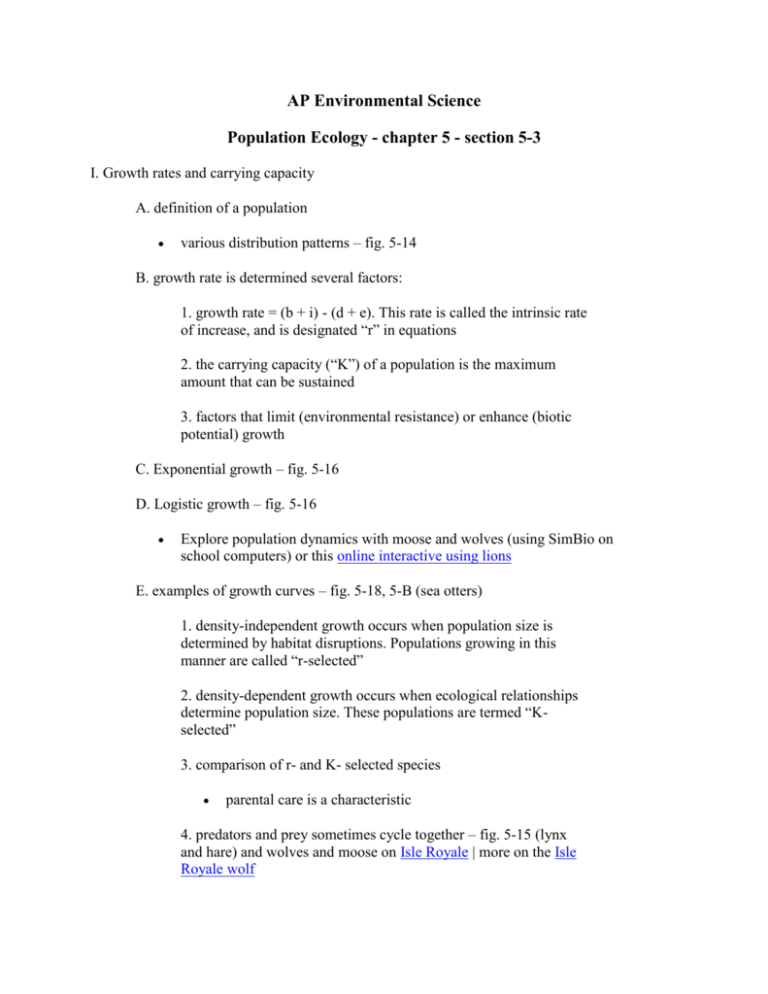
AP Environmental Science Population Ecology - chapter 5 - section 5-3 I. Growth rates and carrying capacity A. definition of a population various distribution patterns – fig. 5-14 B. growth rate is determined several factors: 1. growth rate = (b + i) - (d + e). This rate is called the intrinsic rate of increase, and is designated “r” in equations 2. the carrying capacity (“K”) of a population is the maximum amount that can be sustained 3. factors that limit (environmental resistance) or enhance (biotic potential) growth C. Exponential growth – fig. 5-16 D. Logistic growth – fig. 5-16 Explore population dynamics with moose and wolves (using SimBio on school computers) or this online interactive using lions E. examples of growth curves – fig. 5-18, 5-B (sea otters) 1. density-independent growth occurs when population size is determined by habitat disruptions. Populations growing in this manner are called “r-selected” 2. density-dependent growth occurs when ecological relationships determine population size. These populations are termed “Kselected” 3. comparison of r- and K- selected species parental care is a characteristic 4. predators and prey sometimes cycle together – fig. 5-15 (lynx and hare) and wolves and moose on Isle Royale | more on the Isle Royale wolf 5. survivorship curves show the percentage of a population surviving over time F. sampling/recording population growth 1. census 2. estimating 3. capture/mark/recapture 4. counting evidence (scat, etc.) | check out some research on deer, dragonfly, and other animal populations | video recording of mountain lions in southern California | MoveBank - a website for animal tracking experiments | Bear DNA study in northern rockies

